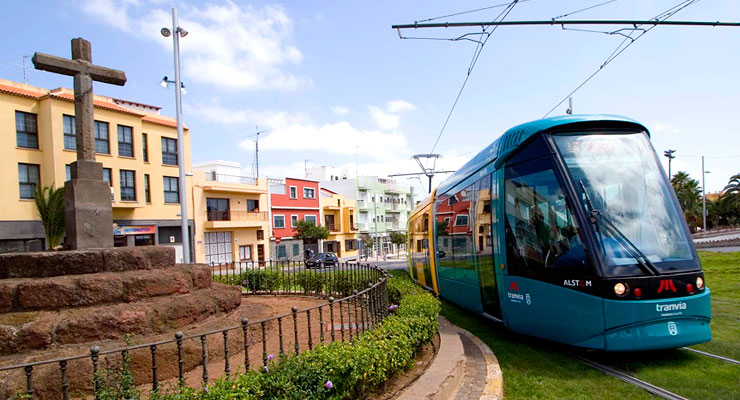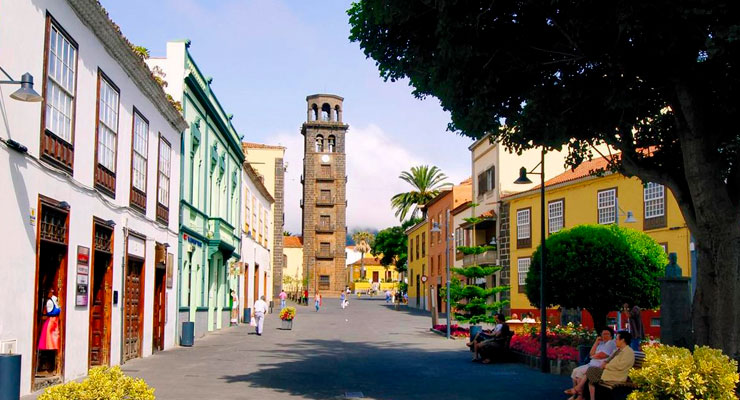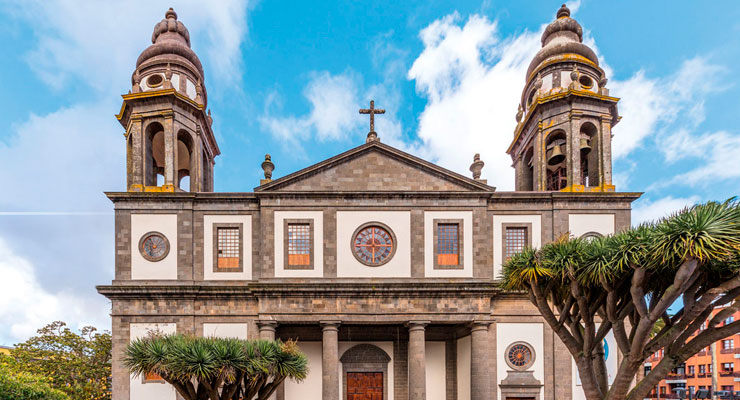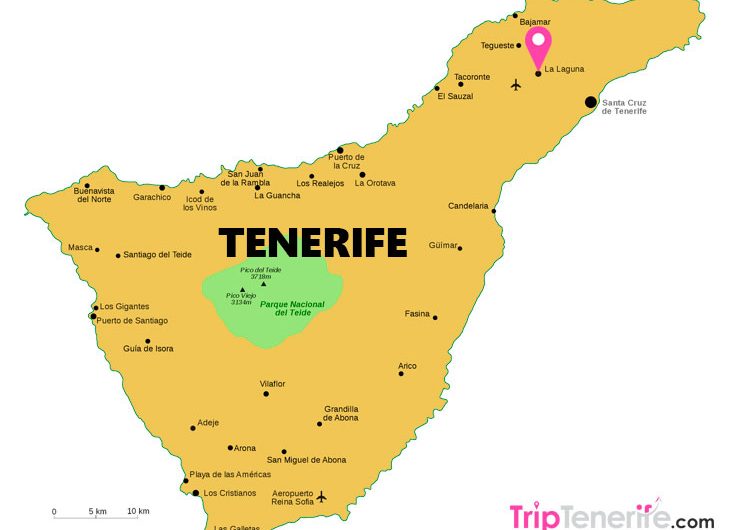Presentation of the city:
The city of La Laguna is located in the northeast of the island of Tenerife, in Canary Islands; although its official name is San Cristobal de La Laguna, it is also known as “La Laguna” by the islanders. It is the second most populous city in the whole island, and was declared World Heritage Site by the UNESCO in 1999, as a colonial city with no walls. The city boasts significant points of interest, such as the Canary Islands Institute of Astrophysics, Tenerife Diocese, the University Hospital of the Canary Islands, Tenerife North International Airport, and so on. It is also home to the University of La Laguna, the oldest university in the Canary Islands, which makes the city an important cultural center as per the number of students it receives. Its name comes from the lake that was there once, where the current city now lies; it was then officially named “San Cristobal de La Laguna” after the saint of day July, 25th, when Spain conquered the island in the XVth century.
La Laguna is a central and multicultural city where it is easy to get around, thanks to a tram system that allows you to reach easily the city center. Tenerife Light Rail System, which has been operating for 10 years, connects the two biggest urban points of the northern part of the island, Santa Cruz de Tenerife and La Laguna itself. From the moment you step out of the tram in Avenida Trinidad – the last stop – you realize this is the most crowded street of La Laguna. Again, as a point of convergence for many students, the city offers a wide range of cultural and artistic events. Thanks to the University of La Laguna, the city is home to students coming from diverse origins, such as the nearby islands, the Peninsula, Europe or even other continents. The University also offers different campuses, which creates distinctive ambiances all over the city.

We cannot, of course, be talking about the city center of La Laguna without mentioning the Old Town and its nice pedestrian area, full of bars and restaurants, clothing stores, libraries, record dealers. A wide range of options for shopping. The Old Town area is a point from which several streets diverge, such as the famous Herradores Pedestrian Street that goes to the Church of La Concepción and starts from the Plaza del Adelantado; but also the Obispo Rey Redondo Street and the huge cathedral of La Laguna in its middle, that was built at the beginning of the last century. Other parallel streets can also be seen, like San Agustin Pedestrian Street, maybe less crowded than the previous ones, as it offers less stores and more cafeterias. La Laguna is known for being cold and rainy, with a unique microclimate that creates brutal and unexpected climate changes, and where a warm weather can suddenly turn into a cloudy sky.

La Laguna also boasts some lovely parks where to have a rest and take the kids to have fun. From the Cathedral, you can walk up Juan de Vera Street, get into the Old Town and reach the nice Parque de la Constitución, which has a sculpture of politician and writer José Marti, whose mother was from Tenerife. It also offers comfortable benches and grass to lay out on a sunny day. On another hand, the park is also the starting point of the well-known Camino Largo, which is lined on either side with huge palm trees; its quietness and stunning views make it the perfect place to have a walk at sunset or go for a run or a jogging. As we move away from the Old Town and enter a more residential area, we can observe halfway the bust of the Uruguayan General Artigas (there are some historical parallelisms between Uruguay and Canary Islands, as the Latin-American country has been founded by islanders).

As mentioned before, it is important to highlight the wide range of cultural events that La Laguna has to offer, for example at Teatro Leal, which boasts different types of plays made for everyone, from great connoisseurs to students on a school trip; and also prize-giving ceremonies or special events. Also, we cannot avoid talking about the Espacio Cultural Aguere, which focuses on urban music: rap, reggae, or some alternative rock band. Throughout its different spaces, it can also host books or art films presentations, if necessary. The strong presence of young people makes these types of events quite successful. However, there are also some indie music or singer-songwriters concerts at El Búho, as well as some poetry readings. Another place in constantly offering artistic events, and especially literature events, is the Ateneo of La Laguna, one the major players in the island when it comes to promote culture, through different conferences and poetry readings.
The city also offers some other interesting spots that you can also visit if you have the opportunity to do so, such as La Laguna market, in Plaza del Cristo. You will find there day-fresh products coming from different parts of the island, as well as a wide range of flowers and handicrafts you can buy as souvenirs. Besides, the Plaza del Cristo can also be home to big music venues as well as fairs such as La Noche en Blanco or the Plenilunio. Another area to go bar hopping is the Cuadrilátero, where students converge everytime they can to go out and have some drinks. This is the most famous place for partying in the city of La Laguna. In short, the city offers an extensive range of tourist attractions to discover with friends or family, from historical spots to concerts and cultural events in the street; you can also enjoy some nice city walks throughout the pedestrian area.







Comments